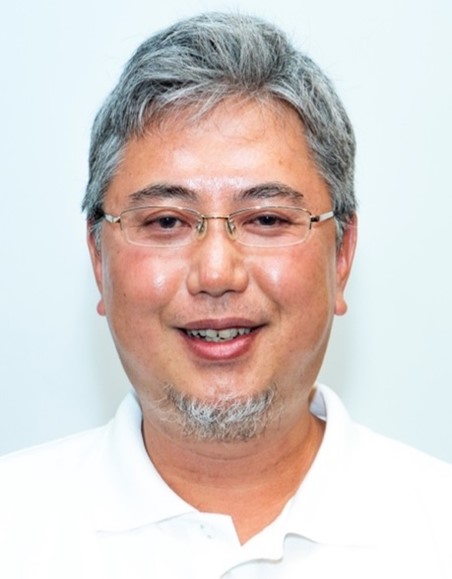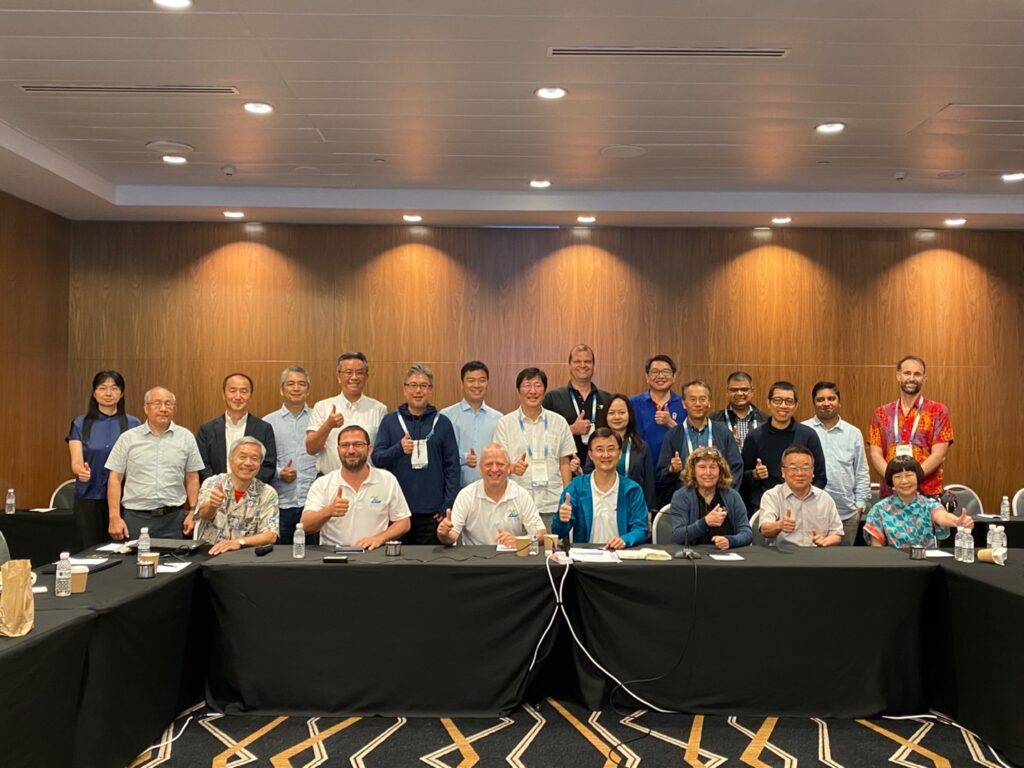Meet the Editor-in-Chief:
Professor Yusuke Uchiyama
In this edition of our “Meet the Editor” series, we speak to Professor Yusuke Uchiyama, Editor-in-Chief of Coastal Engineering Journal (CEJ). Prof. Uchiyama is currently a Professor of the Department of Civil Engineering at Kobe University, where he focuses on the areas of Coastal Engineering, Physical Oceanography and Ocean Modeling.
He has held numerous academic posts such as Visiting Scholar at the University of California, Berkeley, Assistant Research Geophysicist at the Institute of Geophysics and Plantetary Physics (IGPP), University of California, Los Angeles and a selection of other appointments at Japanese research institutions.
Prof. Uchiyama is an active member of numerous academic societies. He serves as President of Ocean Sciences in the Asian Oceania Geoscience Society and is affiliated with societies such as the American Geophysical Union, Japan Geoscience Union, the Oceanographic Society of Japan and Japan Society of Civil Engineers.
日本語版のインタビューはこちらから。
Can you introduce yourself, give us a brief description about who you are, and where you are based in the world.
I am currently a Professor at the Department of Civil Engineering at Kobe University, Japan, since 2015. I earned my B.Eng, M.Eng, and Ph.D. degrees in Civil Engineering from Tokyo Institute of Technology, Japan, in 1993, 1995, and 1998, respectively. In 1998, I joined the Port and Airport Research Institute in Yokosuka, Japan, and later was recruited to work at the Institute of Geophysics and Planetary Physics, University of California at Los Angeles (UCLA) in California, U.S., from 2005 to 2011. I then returned to Japan as an Associate Professor at Kobe University in 2011.
During my sabbatical in 2016 and 2017, I spent a year as a visiting Professor at the Department of Atmospheric and Oceanic Sciences, UCLA. From there, I serve as an Editor for two other ocean sciences journals: Ocean Modelling (Elsevier) and Frontiers in Marine Science (Frontiers Media). Additionally, I hold the position of President of the Ocean Sciences Section of the Asia Oceania Geosciences Society (AOGS).
In a few sentences, please describe the focus of your work.
My career began in Coastal Engineering, a subfield of Civil Engineering, but have always been deeply involved in Geophysical Fluid Dynamics and Oceanography since my time at UCLA. This unique background allows me to study both Coastal Engineering and Ocean Science simultaneously, bridging the gap between nearshore and deep ocean environments where various scientific and engineering issues arise. One of my notable achievements is the development of a numerical hydrodynamic circulation model based on the Regional Oceanic Modeling System (ROMS), with wave-current interaction theory as a key innovation.
Currently, I use my ROMS model to investigate submesoscale mixing in the upper ocean and associated material transport in coastal areas, such as the Pacific coast of Japan, South China Sea, East China Sea, and the U.S. West Coast. I also study wave effects on nearshore to large-scale ocean dynamics and marine environments.

What sparked your interest in this field and why is it important?
Coastal Engineering is a critical discipline responsible for protecting coastlines, port facilities, and our lives and properties from erosion, natural disasters like tsunamis and storm surges, destructive waves from typhoons and hurricanes, as well as the deterioration of water quality and marine ecosystems due to terrestrial and riverine freshwater discharge, eutrophication, and hypoxia. Therefore, Coastal Engineering is inherently interdisciplinary, rooted in classical fluid mechanics but require consideration of marine infrastructure design, evacuation protocols, sediment transport, biochemical processes, interactions with the deep ocean, and climate change.
While Coastal Engineering may not be “rocket science”, its significance cannot be understated. It calls for a combination of specialized expertise to fill crucial niches and the courage to explore new frontiers. Coastal Engineering addresses the challenges posed by climate change and evolving oceanic conditions, making it a vital field of study and practice.
What lead you to become the Editor-in-Chief of Coastal Engineering Journal, and could you briefly share what your day-to-day role as an editor entail?
After my return to Japan in 2011, I re-engaged with the Coastal Engineering Council (CEC) of the Japan Society of Civil Engineers (JSCE), which oversees the editorial board of the Coastal Engineering Journal (CEJ). Leveraging my expertise in both coastal and oceanic sciences allowed me to review multidisciplinary work. I then started by becoming a reviewer for CEJ in 2011, an Editor in 2014, and was subsequently promoted to Associate Editor-in-Chief in 2017.
In 2019, I was appointed Editor-in-Chief of CEJ by the chair of CEC, JSCE. My primary goal as Editor-in-Chief has been to enhance CEJ’s reputation by improving its journal Impact Factor and ensuring the highest-quality peer-review process, primarily by recruiting young, talented, efficient, and energetic researchers to substantially reform the editorial board – which has been quite successful thus far.
My day-to-day responsibilities involve collaborating with the editorial board members and the Taylor & Francis support team to manage submissions through a rigorous yet efficient peer-review process. My team, including two Associate Editors-in-Chief, conducts an initial assessment of every submission to determine if it warrants peer review before assigning it to Editors. This approach reduces the workload for board members and anonymous reviewers significantly, while maintaining high-quality reviews with a low rejection rate for reviewer invitations.

Coastal regions are vulnerable to various environmental changes. Drawing from your expertise, what are some of the key factors both decision and policymakers should consider when planning for sustainable coastal development and disaster preparedness?
One of the pressing topics in the field is the impact of climate change on coastal environments and disaster preparedness. Rising sea levels due to global warming and melting ice necessitate the elevation of coastal structures (e.g., breakwaters) to counteract the increased threat from waves. Several studies published in CEJ have suggested that beach erosion and land loss could be exacerbated nonlinearly by rising sea levels.
Other CEJ papers have argued that warmer sea surface temperatures could intensify low-pressure systems, including tropical cyclones and typhoons, particularly in mid to high-latitude oceans, leading to more frequent and severe coastal hazards. Coastal Engineering plays a pivotal role in providing the best possible estimations under predicted future climates, aiding decision and policymakers in sustainable coastal development.
The long-lasting effects of the Fukushima nuclear accident on marine ecosystems are deeply concerning. Based on your research, what recommendations or strategies could be considered to minimize the impact of radioactivity on marine life and the environment?
It is worth noting that the risk to marine environments from the radionuclides released by the Fukushima Nuclear Power Plant (FNPP) is presently under control, as confirmed by ocean scientists using reliable scientific data. The majority of leaked radionuclides that have settled in terrestrial areas near the accident site, have been successfully decontaminated. The remainder released into the ocean was rapidly diluted and returned to background levels about a year after the occurred accident in 2011. It is essential to recognize that the Earth has already received a substantial amount of radionuclides from historical atmospheric nuclear tests and the Chernobyl accident, establishing the background level.
More recently, FNPP has started releasing treated cooling water containing primarily tritium, which has raised concerns in some countries. However, tritium levels are well below regulated limits, and the total release is much lower than those from operational nuclear power plants worldwide, hence, are considered safe.
Why should researchers submit to the Coastal Engineering Journal?
CEJ serves as a peer-reviewed platform for the publication of research findings and engineering practices in coastal, harbor, and offshore engineering. The journal welcomes original papers and comprehensive reviews on various topics, including waves and currents, sediment transport and morphodynamics, structures and facilities, as well as environmental processes and predictive methods. It covers both fundamental studies involving analytical models, numerical computations, and laboratory experiments, as well as field measurements and case studies of real projects.
CEJ stands out among SCI journals in Coastal Engineering due to several unique features:
Publishes a special issue each year, collecting topical studies related to Coastal Engineering, ranging from specific coastal disasters such as the 2011 Great East Japan Earthquake and Tsunami to “blue carbon and green infrastructures”.
The editorial board presents annual awards for the best paper and the most cited paper to acknowledge excellent contributions.
Offers submission categories beyond Research Articles, including Technical Reports, Review Articles, and Survey Reports. The Survey Report category is particularly focused on rapid and timely publication based on recent field surveys of specific coastal hazards or phenomena, promoting data sharing for the benefit of subsequent research.
As the longest-standing journal in the field, with a history spanning 65 years, CEJ is ranked among the top SCI journals in Coastal Engineering based on Impact Factor and other metrics from the Journal Citation Report. Researchers can trust CEJ as a reputable platform to showcase their collaborative and innovative work.
What advice would you give to early career researchers who are just starting out in this field?
Coastal Engineering is a multidisciplinary, practical, and socially relevant field that often requires close collaboration with policymakers, public service providers, constructors, consulting engineers, marine scientists, and even computer engineers. To excel in this field, it is crucial to acquire knowledge from various disciplines, including not only Coastal Engineering but also physical oceanography, marine biogeochemistry, ocean optics and acoustics, atmospheric and climate sciences, and more. This diversity paves way for numerous career paths, making it essential to have broad interests and strengthen your capabilities.
Early-career researchers should actively engage in communication with peers, as well as contribute to international collaborations and communities. Publishing journal papers should be a key milestone in your career, and you should strive to produce collaborative and innovative work that can make a valuable contribution to the field. I look forward to seeing your research published in CEJ and wish you success in your journey as a coastal engineer or scientist.
About the Journal
Coastal Engineering Journal is a peer-reviewed medium for the publication of research achievements and engineering practices in the fields of coastal, harbor and offshore engineering. The CEJ editors welcome original papers and comprehensive reviews on waves and currents, sediment motion and morphodynamics, as well as on structures and facilities. Reports on conceptual developments and predictive methods of environmental processes are also published.
Topics also include hard and soft technologies related to coastal zone development, shore protection, and prevention or mitigation of coastal disasters. The journal is intended to cover not only fundamental studies on analytical models, numerical computation and laboratory experiments, but also results of field measurements and case studies of real projects.
